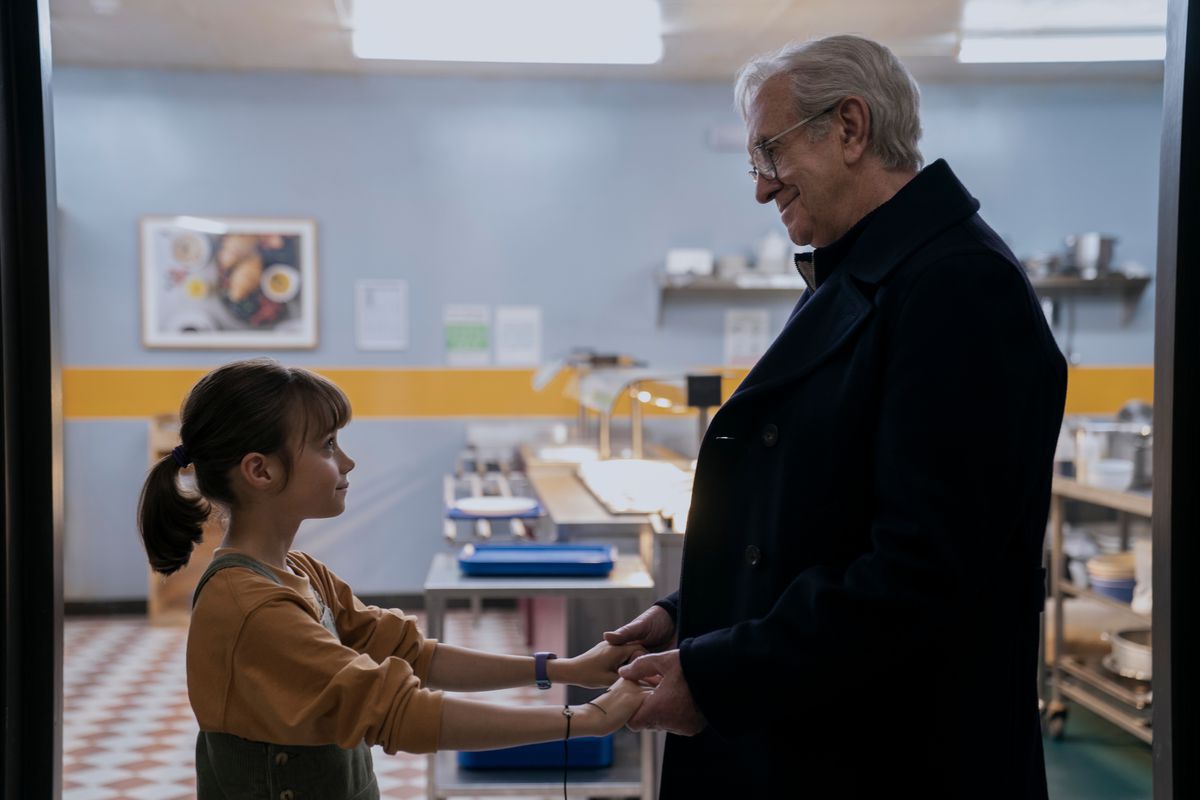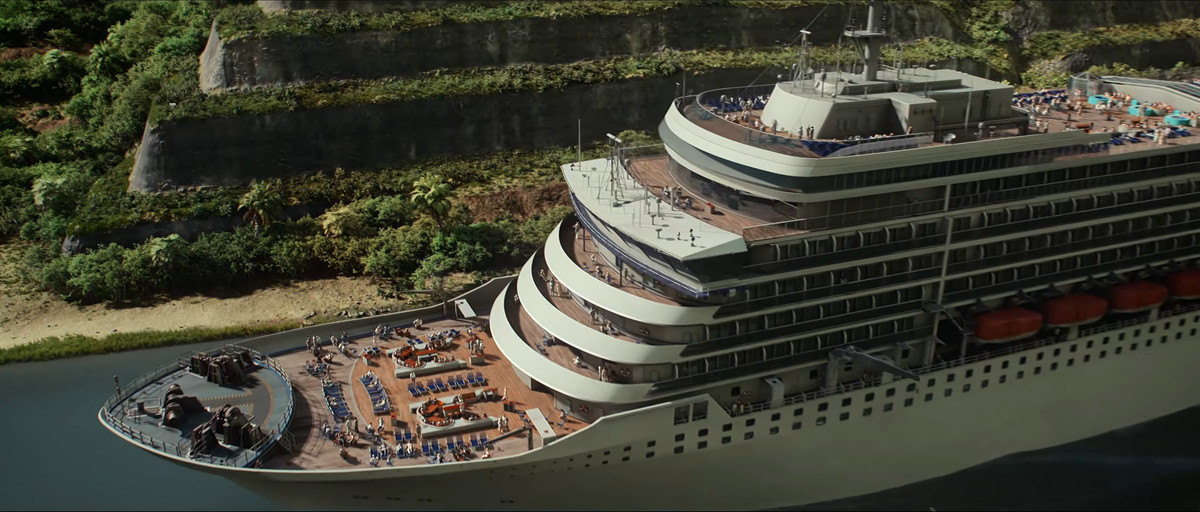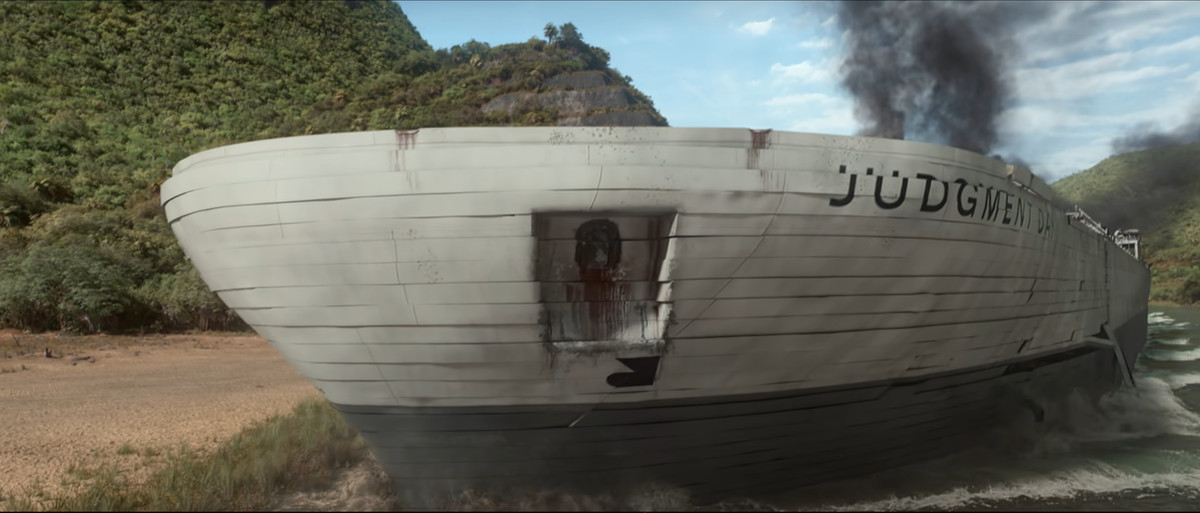‘It was really fun in a gruesome way’: the story behind 3 Body Problem’s intense ship scene
Adaptation of Cixin Liu’s scientifically compact novel The three-body problem is not an easy task. The book is packed with page after page of detailed descriptions of scientific processes, from the impact three suns would have on a single planet to how a supercomputer the size of a proton could disrupt the results of every particle accelerator on Earth simultaneously.
It’s certainly a challenge for showrunners David Benioff, DB Weiss, and Alexander Woo, as they had to make tough decisions about which elements of the novel to show, which to tell, and which to simply gloss over. But it was also a particularly difficult job for Netflix 3 Body problem The series’ visual effects team, which was tasked with bringing many of the novel’s most difficult concepts to life – communicating cutting-edge scientific processes described in great detail in the book but understandably pared down to their most important visual elements for a television audience.
“We definitely had some challenges with the more abstract stuff,” says VFX supervisor Stefen Fangmeier, who worked with Benioff and Weiss on Game of Thrones, said Polygon. “For some of it, they actually just copied it straight from the book, and now I have to figure out what it should look like. (Like) in the particle accelerator to show how (the Sophon) disrupts these particle elements, and the dimensional unfolding of the 10th dimension of a proton into two dimensions. Even things like the countdown. It’s incredibly challenging because we did so many versions of that and we didn’t want it to look like an alarm clock, but it had to be readable.”
Fangmeier says this was a crucial part of the sprawling VFX team BUFa Paris-based company that worked on the Neil deGrasse Tyson-hosted renewal of the science documentary series Cosmos. Their experience with high-scientific work (and their internal software) was “essential” to the team’s ability to convey some of the more difficult scientific processes.
Image: Netflix
One of the biggest projects for the VFX team (and the whole 3 Body problem crew) was the graphic destruction of a large ship and everyone on board as it sails through the Panama Canal in episode 5. It’s the kind of VFX challenge that talented teams thrive on: a big moment that you can imagine in theory, but for which We have no practical example to draw from. Taken directly from one of the book’s most memorable and gruesome scenes, the sequence shows what happens when nanowires are used to slice through a giant ocean-going vessel, killing thousands on board.
All the challenges that come with adapting the terror unfolding in the boat create one of the biggest differences between how this scene is depicted in the book and in the show. The book, for better or worse, doesn’t pay nearly as much attention to characters and character development as the Netflix adaptation. Unlike the series, we don’t get to see life on the ship, or meet children who are about to meet their brutal ends through the actions of our protagonists.
“We wanted to show it, we didn’t want to avoid it,” Benioff said during a roundtable discussion earlier this month. “I think if you actually see something on a screen, it will be more gruesome than in the book. You read these descriptions, but you don’t see blood, you don’t see a bunch of kids running away, you don’t see kids’ backpacks being split in half.”

Photo: Ed Miller/Netflix
“The challenge here is that we have to at least meet or even exceed people’s imagination when they read the book,” says Woo. “Give them everything the order entails. And so the logistics of it probably took more hours of blood and sweat per frame than any other scene in the show.
The wires are spaced every 3 meters, cutting the ship into layers. For Fangmeier, the easiest visual point of comparison came from an unlikely place: the dessert menu.
“Imagine you have a big cake cut into all these layers on a cart and you’re pushing it around. When it hits the wall, everything starts sliding off,” says Fangmeier. “The point of resistance, which stops the forward momentum, causes all the pieces to suddenly think: Oh, I’m still moving forward because I’m not really connected to anything anymore. And that’s how we depicted it. The top layer would go first, and it would take some pressure off the bottom layers, and so everything started to slide.”
The location was an extra challenge. Initially, filming on the actual Panama Canal was considered, but recent events in the real world made that a no-no. “We checked in at the Panama Canal, but they weren’t really interested in letting us film it in Panama after the (Ever Seen incident at the) Suez Canal,” says Fangmeier. “(They said), ‘We don’t want anything to do with that.’ And then Netflix legally looked at it and said: ‘Yes, but we can still call it the Panama Canal. It’s not a trademark, it’s a geographic location. ”
So in addition to animating the ship and its destruction, the VFX team also had to create a CG reconstruction of the canal itself, using an Olympic rowing facility outside London as a base and turning it into the “much more tropical” Panama. Channel in post-production.
Once the cutting started, an additional element of chaos was injected. Some elements were filmed practically: the production built stages at London’s Shepperton Studios to represent the decks of the ship, and stunt people ran through the corridors and were ‘cut to pieces’. But most of the sequence was CG, with some practical help.

Image: Netflix

Image: Netflix
“Deb Riley, our production designer, drew lines on the walls saying: This is where the fibers would be,” says Weiss. “Anything that goes through the fiber pads is cut in half.”
“We had installed LED strips that mimicked the speed of the wires as the ship sailed through them,” says Benioff. “It was an incredible amount of prep work, and then an incredible amount of post work from the VFX team.”
The image of the sliced backpacks is one of the most memorable from the series and was executed through a combination of practical effects and CG.
“The special effects team actually cut and timed those backpacks,” says Fangmeier. “They released them with a timer. So what we had to do is digitally sew them back together, and then make the cut lines visible as they fall down.”
When it came to designing the images of people being sliced by the nanofibers, the goal was to keep it from looking ridiculous.
‘It’s fun to cut into the torso. Maybe nice and close to the head,” says Fangmeier. “It got a little gruesome, but not overly so. It wasn’t too exploitative. Like it Kill Bill 2 – I still remember in that sequence all the arms were cut off and fountains of blood spouted; it got pretty comical there. And we definitely wanted to avoid that.”
“It was really fun in a horrible way,” Weiss agrees. “There were really fun and funny production meetings about which department was going to do what and how they were all going to be stitched together.”
Fangmeier’s background gave him a unique perspective on bringing the entire project together, from an artistic and scientific point of view. A former computer scientist, he got his start in the entertainment industry working with storm chasers to create three-dimensional models of how tornadoes formed. As he put it: “The scientists came in and three days later we are filmmakers.” Ten years later he continued working Twisterwhich brings things full circle, but his long career also includes work on Terminator 2: Judgment Day, Jurassic ParkAnd Master and commander: the other side of the worldand also directs the Eragon movie.
Given his background, does Fangmeier think the show passes the scientific test?
“Well, we’ll just see what Neil deGrasse Tyson has to say about it.”
